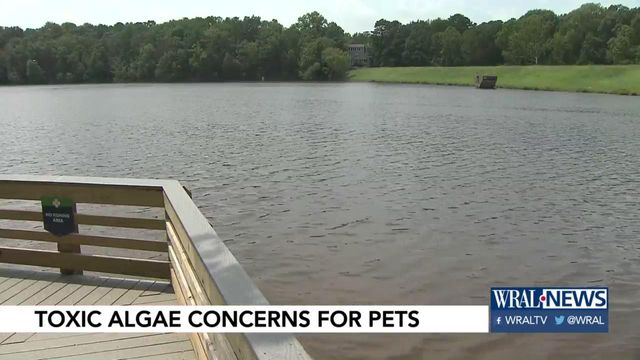Blue-green algae found in some NC lakes and ponds could be toxic to dogs, experts say
The North Carolina Department of Water Resources is asking pet owners to be aware of an algae bloom present in some state ponds and lakes that can be toxic to dogs.
Posted — UpdatedToxins found in some blue-green algae can kill dogs if ingested, but according to Doug McRainey, director of the Town of Cary's Parks and Recreation Department, the presence of cyanobacteria does not always mean toxins are present in the water.
According to McRainey, the town works closely with the NCDWR. Whenever algae is spotted, the town contacts the NCDWR to request water testing.
The May 27 tests of Bond Lake found no toxins were present in the water. Pet owners should look out for the presence of blue-green algae in freshwater and use caution if they choose to let dogs swim in lakes and ponds.
Blue-green algae is most common in the summer, and toxic algae blooms are more likely to infest bodies of fresh water when the weather is warm and waters are stagnant, according to the N.C. Department of Health and Human Services.
Even if a health notice isn't posted on the NCDWR map, it's best for humans and pets alike to avoid waters that smell bad or look murky or odd in color, state health officials said.
Related Topics
• Credits
Copyright 2024 by Capitol Broadcasting Company. All rights reserved. This material may not be published, broadcast, rewritten or redistributed.





